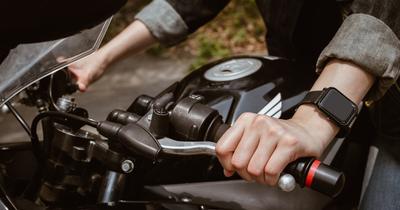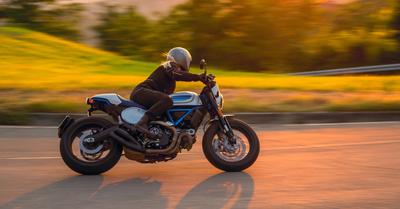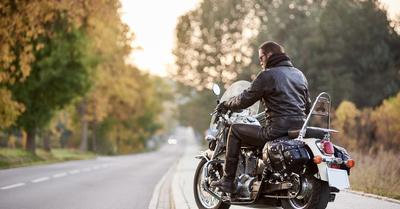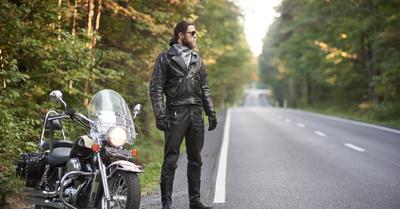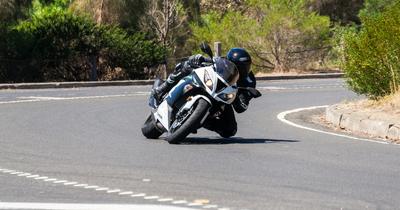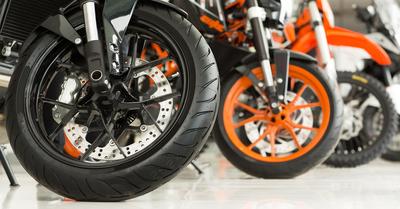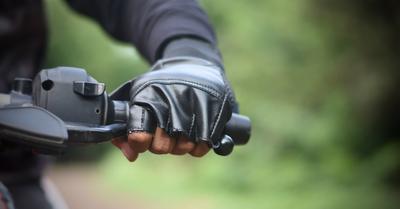Why Your Motorcycle Brake Caliper Won't Release
Encountering a brake caliper that won't release on your motorcycle can be both puzzling and hazardous. It's a situation that not only impedes your ride but can also pose a serious safety risk. Understanding the possible causes and knowing how to address them is crucial for any rider.
From hydraulic issues to mechanical hindrances, various factors can lead to a caliper sticking and preventing the wheel from turning freely. Regular maintenance is key to avoiding brake caliper seizures. Proper servicing involves checking the brake fluid, which should be free from contamination, and ensuring that the brake pads are in good condition and not overly worn.
It's also essential to examine the caliper pistons for signs of corrosion or dirt buildup, which can impede their movement. Keeping an eye on these components can prevent many issues related to brake calipers.
When your motorcycle brake caliper won't release, it can lead to poor brake performance and even unsafe riding conditions. Understanding the various factors that contribute to caliper seizure is essential for maintenance and troubleshooting.
Here’s a concise table showing common causes why your motorcycle brake caliper won’t release.
1. Clogged-Up Ports in the Master Cylinder Reservoir
Clogged pores in the master cylinder reservoir can prevent brake fluid from flowing properly. This issue arises when dirt and debris block the passages, disrupting the hydraulic pressure needed to pull the caliper pistons back into the caliper.
Troubleshooting Steps
Safety First: Ensure the motorcycle is securely parked and the ignition is off. Wear protective gloves and eyewear.
Inspect the Master Cylinder: Check the brake fluid level in the master cylinder reservoir. If the fluid is dirty or low, it may be a contributing factor.
Clean the Reservoir: Carefully remove the reservoir cap. Use a clean rag to wipe out any dirt or debris from the reservoir. Be careful not to let any contaminants enter the brake lines.
Check the Ports: Look for the small ports inside the master cylinder, typically located at the bottom. These can get clogged with debris or old brake fluid.
Unclog the Ports: Use a fine piece of wire or a small needle to gently clear any blockages in the ports. Be careful not to damage the ports.
Flush the Brake System: If the fluid is dirty or contaminated, consider flushing the entire brake system. This involves draining the old brake fluid, cleaning the system, and refilling it with fresh fluid.
Bleed the Brakes: After cleaning or flushing, you'll need to bleed the brakes to remove any air that may have entered the lines during the process.
Check Brake Hoses and Lines: Inspect all brake hoses and lines for any signs of wear, damage, or leaks. Replace if necessary.
Reassemble and Test: Once everything is clean and reassembled, refill the reservoir with the correct type of brake fluid. Test the brake lever or pedal for proper pressure and function.
2. Stuck or Broken Return Spring in the Master Cylinder
The return spring inside the master cylinder ensures the brake lever returns to its original position. If this spring is stuck or broken, it can cause persistent pressure in the brake line, which makes the caliper pistons fail to retract.
Troubleshooting Steps
Inspect the Master Cylinder: Check the master cylinder for any visible damage. If the return spring is visibly broken or damaged, it will need to be replaced.
Check Brake Fluid Level: Low brake fluid can sometimes cause brake issues. Check the fluid level in the reservoir and top it up if necessary.
Bleed the Brakes: Air trapped in the brake line can cause the caliper to stick. The brake system was broken to remove any air bubbles. This involves opening the bleed valve on the caliper, pressing the brake lever, and closing the valve before releasing the lever. Repeat until only fluid comes out.
Clean the Caliper Pistons: If the pistons in the caliper are dirty, they can stick. Remove the caliper and clean the pistons using brake cleaner. Be careful not to damage any seals.
Lubricate Moving Parts: Lubricate the pivot points of the brake lever and any other moving parts with a suitable lubricant.
Check the Brake Hose: A damaged or pinched brake hose can restrict fluid movement, causing the caliper to stick. Inspect the hose for any damage or unusual bending.
Return Spring Issue: If the return spring in the master cylinder is the problem, you may need to disassemble the master cylinder to inspect it. This is a more advanced task and may require special tools and expertise.
Reassemble and Test: After performing any maintenance or repairs, reassemble all parts and test the brake system for proper operation. Make sure the brake lever feels firm, and the caliper releases properly when you release the lever.
3. Too Much Brake Fluid in the Caliper
Overfilling the brake system with brake fluid can generate excess pressure within the caliper. This can lead to the pistons becoming extended and the pads pressing against the rotor even when you're not applying the brake.
Troubleshooting Steps
Check the Brake Fluid Level: Start by checking the brake fluid level in the master cylinder reservoir. If it's overfilled, carefully remove some fluid using a syringe or a turkey baster dedicated to this purpose. Ensure you do this in a clean environment to avoid contamination.
Inspect the Master Cylinder: Sometimes, an overfilled system can be due to a malfunctioning master cylinder. Check for proper operation and signs of damage. If the piston in the master cylinder doesn't fully return, it can keep pressure on the fluid, causing the calipers to stick.
Bleed the Brake System: Bleed the brakes to remove any excess fluid. This process also helps to remove any air bubbles that might be causing pressure build-up in the system.
Check Brake Pads and Caliper: Ensure that the brake pads are not excessively worn and that the caliper is moving freely. Sometimes, the caliper can get stuck due to dirt, rust, or corrosion.
Inspect Brake Hoses and Lines: Look for any kinks, blockages, or damages in the brake hoses and lines. A damaged hose can cause pressure build-up in the caliper.
Release Pressure Manually: You can try to release the pressure manually by slightly opening the bleeder valve on the caliper. Be prepared for some brake fluid to escape, and make sure to catch it properly.
Check for Mechanical Obstructions: Sometimes, the issue can be due to mechanical obstructions or misalignment in the brake assembly. Ensure everything is properly aligned and moving freely.
Consult the Service Manual: Refer to your motorcycle's service manual for specific instructions related to your model. This can provide more precise guidance.
4. Old Brake Fluid
An old brake fluid can absorb moisture over time, which leads to corrosion and the deterioration of internal components like new seals. This can cause pistons to stick within the calipers and not retract properly.
Troubleshooting Steps
Inspect Brake Fluid: Check the brake fluid level in the master cylinder. If it's low, top it up with the correct type of brake fluid for your motorcycle. However, if the fluid is dark, cloudy, or contains debris, it needs to be changed.
Flush and Replace Brake Fluid: Drain the old brake fluid from the system and flush it thoroughly. Refill with fresh brake fluid. This is often called bleeding the brakes. You need to ensure no air bubbles remain in the system as air can compress, causing brake failure or poor brake performance.
Check the Brake Caliper: Sometimes, the brake caliper pistons can become stuck due to corrosion or dirt buildup. Clean the caliper and the pistons carefully. If the pistons are corroded or damaged, they may need to be replaced.
Inspect Brake Pads: Check the brake pads for wear. If they are overly worn, replace them.
Check Brake Lines: Inspect the brake lines for any signs of wear, cracking, or leaks. Replace if necessary.
Lubricate Moving Parts: Apply lubricant to the caliper's sliding pins and make sure they move freely.
Test Brakes After Repair: Once everything is reassembled, pump the brake lever or pedal several times to build pressure in the system. Make sure the brake engages and releases properly.
5. Stuck Pistons
Stuck pistons are often a result of the buildup of brake dust, rust, or corrosion. If the piston does not slide smoothly within the caliper, it can remain extended, keeping the brake pads in contact with the brake discs and causing the rear brakes to drag.
Troubleshooting Steps
Inspect the Brake Lever and Cable: Check if the brake lever is returning to its original position. Sometimes the issue might be with a stuck lever or a frayed cable, not the caliper itself.
Check Brake Fluid Level and Quality: Low or old, contaminated brake fluid can cause caliper pistons to stick. If the fluid is dark or dirty, it needs to be replaced.
Examine the Brake Pads: Worn brake pads can cause the pistons to extend too far and get stuck. Replace the pads if they are too thin.
Clean the Caliper: Remove the caliper from the disc and carefully inspect it for dirt, debris, or corrosion. Clean the caliper with a brake cleaner, being careful not to damage any rubber seals.
Compress the Pistons: Try to carefully push the pistons back into the caliper. You can use a C-clamp or a special brake caliper tool for this. If they don’t budge, don’t force them as you might damage them.
Inspect the Piston Seals: If the pistons are still stuck, the issue might be with the piston seals. They might need to be replaced if they are damaged or worn out.
Bleed the Brakes: Air in the brake lines can cause braking issues. I bled the brakes to ensure there were no air bubbles in the system.
Check the Brake Hose: A damaged or blocked brake hose can also cause the caliper to stick. Inspect the hose for any signs of damage or blockage.
Reassemble and Test: After addressing the issue, reassemble the brakes, making sure everything is properly tightened. Test the brakes in a safe area to ensure they are working correctly. Ensure that the rear brake is also working perfectly.
Servicing and Maintenance of Your Brake Caliper
Maintaining the brake system of your motorcycle is paramount to ensuring a safe ride. Regular servicing prevents the common issue where a motorcycle brake caliper won't release, which could compromise your safety.
Cleaning the Caliper and Related Parts
Keeping your caliper and related components clean is crucial for smooth operation. Dirt and debris can cause the caliper pistons to stick, preventing the brake pads from releasing properly. Use a quality brake cleaner to remove grime and brake dust from the caliper. Ensure the area around the bleeder valve is also clean to avoid contamination when bleeding the drum brakes.
Bleeding the Brake System
Trapped air in the brake line affects the hydraulic pressure necessary for your brake system to function. Bleeding the brakes removes air bubbles and restores the integrity of your brake's hydraulic system. For this process, locate the bleeder valve on the caliper and follow the correct procedure to force air and old fluid out, allowing new fluid to fill the system.
Replacing Brake Fluid and Pads
Over time, brake fluid can absorb moisture and degrade, reducing its effectiveness. Replace old brake fluid with new fluid to maintain optimal performance. Additionally, worn brake pads can affect the ability of the caliper to release. Inspect and replace brake pads when they show signs of wear to ensure your motorcycle's brakes remain in good working condition.
Maintain your motorcycle's brake calipers through regular servicing, and you'll avoid most issues related to a caliper that won't release, keeping your rides safe and enjoyable.
This table gives you a clear maintenance schedule for motorcycle brake systems
Preventive Measures to Keep Your Brake System Working
Ensuring that your motorcycle's brake system functions properly is crucial not just for performance but for your safety on the road. Adequate maintenance can prevent most issues with motorcycle brake caliper functionality.
Regular System Checks
- Hydraulic Fluid Levels: Check your motorcycle's hydraulic fluid regularly. Low levels of fluid can lead to a drop in hydraulic pressure, compromising brake function. Refilling the master cylinder reservoir with new brake fluid can prevent many common issues related to hydraulic brake systems.
- Brake pad inspection: Regularly inspect the brake pads for wear. Worn brake pads can affect the brake caliper's ability to release properly. Replacing brake pads when necessary ensures that the pads and the caliper piston maintain proper function.
Best Practices for a Healthy Brake
- Brake lever function: Always ensure your brake lever and brake pedal are returning to their original position after you release them. If they don't, this could indicate a problem within the brake system that needs attention.
- Clean brake components regularly: Dirt and debris can impede the performance of the caliper and other components of the brake system. Use a spray brake cleaner to remove any brake dust and grime from the caliper and surrounding parts.
- Regular fluid changes: Brake fluid attracts moisture over time, which can lead to corrosion inside the hydraulic brake system. Flushing the old brake fluid and replacing it with new fluid can help maintain the integrity of the system.
Ensuring these preventive measures are part of your regular maintenance routine can help to avoid issues where the motorcycle brake caliper won't release, keeping your brake system in good shape and allowing you to ride confidently and safely.




